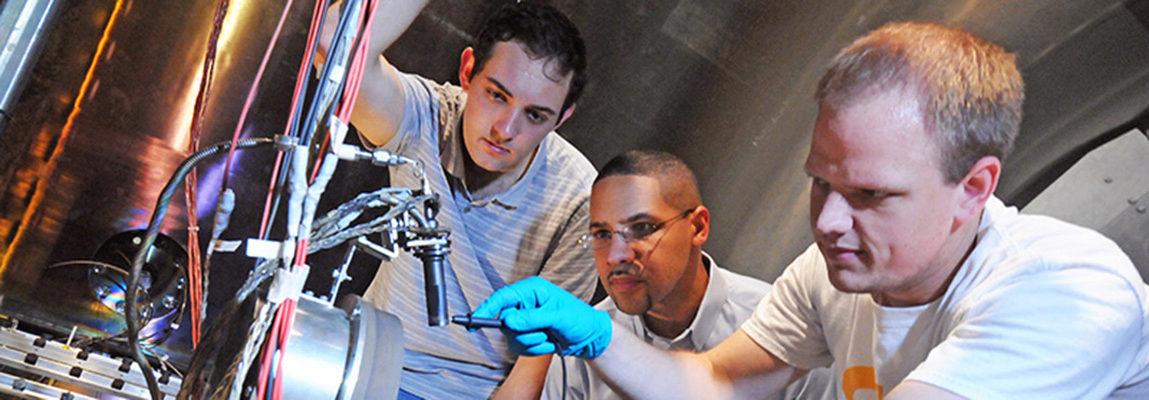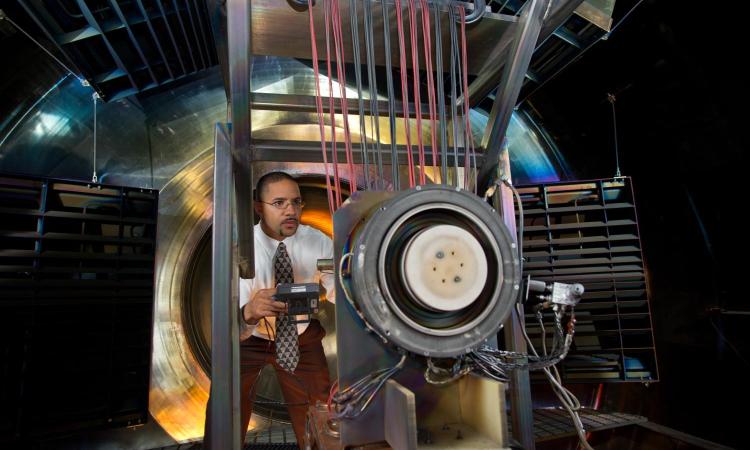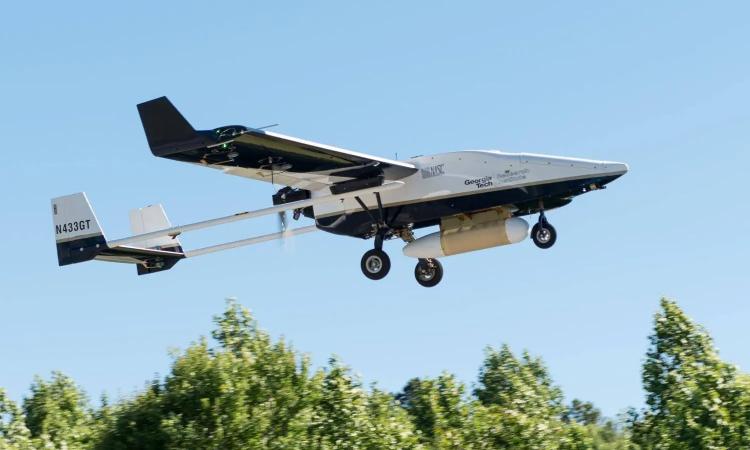Aerodynamics & Fluid Mechanics (AFM)

(text and background only visible when logged in)

Focus
The AFM group focuses its research on the fluid flow around and within aircraft, rotorcraft, planetary entry vehicles, engines, and other complex systems. The group conducts fundamental studies of flow physics and employs advanced computational and experimental techniques and facilities to extend the understanding and capabilities of many essential aerospace applications. The Georgia Tech Aerospace program has a strong computational fluid dynamics (CFD) research program in fixed- and rotary-wing applications from incompressible through hypersonic speed regimes. The group also pursued a cutting edge research programs in experimental aeroacoustics, vortex dominated flows, turbulence, and turbulent combustion.
Current research activities include: advanced algorithms for unstructured, Cartesian and overset-grid based CFD, experimental and computation investigation of rotary wing and fixed wing vehicle aerodynamics, acoustics of small- and large-scale aircraft, large-eddy simulation (LES) studies of turbulence and mixing, direct numerical simulation of turbulence on massively parallel computers, fluid flow imaging, diagnostics, and control, prediction of hypersonic flows and propulsion/airframe integration, investigation of vortex interactions and vortex flow control, and improved integration of CFD in the design process for aircraft, UAVs, and spacecraft.
(text and background only visible when logged in)

Impact
Many of the newest aircraft designs require the sort of innovative research that is routine for the AE AFM group. Newer vehicles increasingly require highly integrated wing/body aerodynamics, composite structures, and integrated propulsion systems. The cylindrical fuselage and moderately swept wings of older airplanes is quickly being replaced by a wide array of blended wing-body, joined- wing, vertical take-off and land, hypersonic scamjets, and even flapping wing vehicle designs. The growth and success of unmanned aerial vehicles (UAVs) and the critical need for highly fuel-efficient and environmentally responsible systems are leading to substantial innovation in aerospace configurations.
The AE AFM program advances prediction and control of fluid mechanics as a means of developing highly capable, efficient, and safe aircraft, launch and reentry vehicles, rotorcraft, novel UAV configurations, and wind energy systems. This work is of critical importance to the commercial aerospace industry, government agencies (e.g. NASA, DoD, NSF, DoE, FAA), and to the public in need of safe, affordable aerospace transportation. The AFM group has established itself as a thought leader through programs such as the National Rotorcraft Technology Center and the Multidisciplinary University Research Initiative on Intelligent Turbine Engines. The AFM’s close collaboration with other AE labs - notably the Aerospace Systems Design Laboratory (ASDL) and the Space Systems Design Laboratory (SSDL) - and with the Georgia Tech Center for Space Technology and Research (C-STAR) improve full configuration designs and promote mission success of aircraft and spacecraft.
(text and background only visible when logged in)

Facilities
The AFM group has access to state of the art facilities for both experimental and computational research. The experimental facilities include the John J. Harper Wind Tunnel, located in the basement of the Guggenheim building. The tunnel has a 7 x 9-foot test section and a speed range of 10 to 220 feet-per-second. A variety of vortex flow studies are conducted in this facility. A six-degree-of-freedom wind-driven manipulator, located where, is used to simulate dynamic maneuvers for model testing. Diagnostic capabilities include laser Doppler velocimetry (LDV), particle image velocimetry (PIV), automated scanning of static pressure and condenser microphone sensors; hot-film anemometry; high-frequency pulsed laser sheet imaging, and digital signal and image processing. Additionally, a 42 x 42 inch aerocontrols wind tunnel is available for diagnostic development, flow control experimentation, and small scale testing.
Located in the basement of Knight, AE's 9-foot hover facility is a double-walled, double-celled, rotor test chamber that is used as a testbed for rotor aerodynamics and diagnostic developments. The aeroelastic rotor test chamber facility is a state-of-the-art 16-foot hover facility where rotor blades can be subjected to digitally-controlled higher-harmonic excitation using hydraulic actuators on the pitch links. AFM students and faculty also conduct acoustics and active noise control research utilizing the unique aeroacoustic facilities at the Georgia Tech Research Institute (GTRI). These include a 300-feet-per second free-jet wind tunnel housed with an anechoic chamber and an engine jet acoustic test facility.
Computational investigation of fluid flow is based on solving various forms of the unsteady, three-dimensional Navier-Stokes equations. The most computationally intensive investigations conducted by AFM in sponsored research projects utilize tera-flop class national supercomputer assets at NASA, DoE, DoD, ONR. An impressive suite of high-performance computing (HPC) facilities at Georgia Tech is also used. Georgia Tech’s Partnership for an Advanced Computing Environment (PACE) provides network infrastructure, software, and use of the FoRCE Research Computing Environment which is a shared cluster that includes nodes, GPU's, and high-speed scratch storage. The computational combustion laboratory includes a supercomputer and workstation clusters utilized largely for investigation of turbulent combustion. Code development and moderately-sized simulations in AFM are performed in computational clusters such in the Aerothermodynamics Research and Technology Lab (ARTLAB), the Computational Fluid Dynamics Lab, and the Nonlinear Computational Aeroelasticity Lab. These Linux-based workstations are used for grid generation, computation, post-processing and scientific visualization of flow solutions.
(text and background only visible when logged in)
The AE faculty collaborating in the Aerodynamics and Fluid Mechanics (AFM) group represent the School's commitment to breadth and depth. Find out more about their background, accomplishments, and vision. See the faculty who work in the group.
Get the full picture by finding out about all of the AE labs, collaborative groups, and centers.
Apply to the Aerospace Engineering Graduate Program.